Mura
- Self-denomination
- Where they are How many
- AM 18511 (Siasi/Sesai, 2020)
- Linguistic family
- Mura
The Mura occupy vast areas in the hydric complex of Madeira, Amazonas and Purus rivers. They live in Indigenous Lands, as well as in local urban centers, such as Manaus, Autazes and Borba. Since first records from the 17th century they are described as a river-faring people, with broad territorial mobility and expert knowledge of pathways in between small rivers, channels, islands and lakes. In the long history of contact, they suffered several stigmas, massacres, as well as demographic, linguistic and cultural losses. Though they were originally speakers of an isolated language, the Mura started to use Nheengatú (Amazonian General Language) in exchange with the whites, blacks and other indigenous peoples. In the 20th century, portuguese became the main language used. Currently, despite historical changes, the Mura carry out diverse efforts to be fully recognized as a distinct people.
Name
The Mura, who are portuguese speakers, conjugate miscegenation and territoriality in their current forms of self-determination. When questioned about place of birth or indigenous identity, Mura people usually reply: "I am a legitimate caboclo of Madeira river". By "legitimate caboclo" they intend to clarify their ethnic group's particular condition: it states the political determination of being Mura, in spite of historical changes. Therefore, they appropriate a regional term, "caboclo", commonly used in a despising manner by locals to refer to the "impure", "cultured" indian. Made positive by the indians, the term "caboclo" becomes an identifier of what it is to be a Mura today: a mixed indian, whose genealogy is the result of incorporating Brazilians, from the northeast and from Maranhão, Peruvians, and non-indians in general, who came to be part of the ethnicity via marriage, most of the times, to Mura women. By saying "caboclo", the Mura allude to the biological component, the indigenous blood, even if mixed; by "legitimate", they signal belonging to a specified geographic area; a river, floodland or lake, for instance. They are no longer "pure indians" because they have gone through the civilizing process, with all of its terrible aspects, since the colonial period until today. Identifying themselves as "legitimate caboclos", the Mura reaffirm their conscience of the complex historical process they went through to remain as a group. Local society, however, frequently questions whether the Mura are "real indians".
Language
The Mura in the Madeira and Solimões rivers spoke the Mura language, of an isolated linguistic branch, until early in the 20th century. Since the Conquest, these indians also started using the general language (or Nheengatu), which was gradually replaced by Portuguese.
In 1826, an anonymous observer registered that the Mura in Madeira river’s mouth spoke "general language as well as their three dialects – nasal articulated, guttural and whistle (C. Moreira Neto, 1988: 358). A similar linguistic situation was described by Barbosa Rodrigues (1975) in the Urubu river; by Tastevin (1923) in the proximities of Manaus; and by Nimuendajú, in relation to Mura from the Madeira and Solimões rivers.
Apaitsiiso, the language spoken by the Pirahã (current inhabitants of the Marmelos and Maici rivers, classified by Nimuendaju (1946) as a Mura subgroup), presents the same characteristics. Studies by Henrichs (1964), Everett (1978, 1983) and Gonçalves (1988, 2001) describe it as a tonal language, in which meaning is established eminently by tonal relations. By whistling or shouting, for example, speakers can generate specific modes of communication, especially effective for long distance conversations.
The general language, designed by the jesuits based on Tupi-Guarani languages of the coast, was, until the expulsion of the jesuits and creation of the lay government by the Pombaline reforms (1755), the official language in Grão-Pará, imposed to all natives in the missions, in commercial relations and in labor discipline efforts. Until the 19th century, the Mura used it broadly in communication with settlers, missionaries, black slaves and other indigenous peoples. This, however, does not mean they had abandoned the Mura language. In the 20th century, Nheengatu lost to Portuguese its role as the intercultural lingua franca.
Currently, the Mura, portuguese speakers like other Amazonian peoples who have lost their mother tongues, reaffirm Nheengatu as an indigenous language. In several cases, the Mura associate general language terms and idioms used by elders to their own Mura language.
Presently, the Mura have been carrying out efforts for linguistic and cultural valorization and rescue of the various "slangs" in Mura language.
Location
Historical sources from the 18th and 19th century attest to Mura being present in vast and diverse regions in Eastern Amazon. The range of their territorial occupation and the group's population density were first approached by Nimuendajú (1948). From the 17th century on, the Mura would have migrated from the Peru border (Loreto region) to various areas in the hydric complexes of the Japuará, Solimões, Madeira, Negro and even Trombetas (Oriximiná region) rivers. This occupation area corresponded to an estimated population of 60 to 30 thousand people. In this period, missions and rescue troops caused the fragilization and depopulation of several ethnicities that occupied these regions, which, many believe, benefitted Mura populational growth and expansion to the East. In the 18th and 19th centuries, despite having suffered several attacks from the colony, the Mura maintained extensive positions in the hydric complex of the Madeira, Solimões and Purus rivers.
The Mura currently continue to occupy large territorial portions in the same hydric regions. They are spread across over 40 Indigenous Lands, in different stages of land regularization, distributed in the municipalities of Alvarães, Anori/Beruri, Autazes, Borba, Carceiro da Várzea, Novo Aripuanã, Itacoatiara, Manaquiri, Manicoré and Uarini; all located in Amazonas state, specially in the interfluvial areas between Madeira and Purus rivers. In the urban regions, such as state capital Manaus and the centers of inhabited municipalities, there are registered neighborhoods almost exclusively occupied by Mura populational segments, who keep close ties to residents of IL villages.
Population
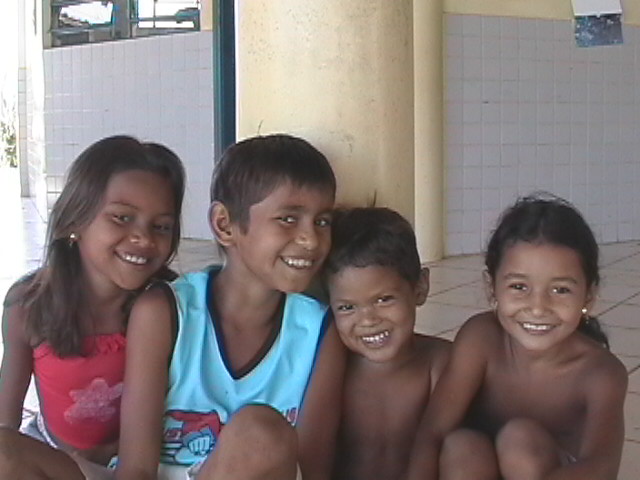
Due to the ample mobility and dispersion of the Mura over a vast territory, global population counts are highly imprecise and hard to carry out. A gathering of surveys published by Funai, executed during land regularization processes, which took place between 1991 and 2008, points to an approximate population of 9,300 people residing in Indigenous Lands.
<style type="text/css"> @page {{# margin: 2cm :}} p {{# margin-bottom: 0.25cm; line-height: 120%; text-align: left; page-break-inside: auto; orphans: 0; widows: 0; page-break-after: auto :}} a:link {{# so-language: zxx :}} </style>
This computation, however, excludes population from villages and Indigenous Lands whose demarcation processes have not been concluded, as well as residents of urban centers, which hurts or even halts efforts for adequate public policy plans to serve Mura population, both in villages and in cities.
History of contact
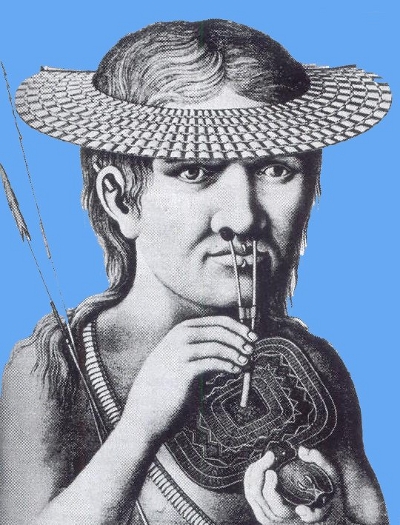
Mura presence in the Madeira river's hydrographic system is documented since the beginning of the 18th century. The first colonial records register a population of river-farers, with total dominion over the intricate river pathways and the arts of subsistence in the rivers and lakes, who lived on board during the floods and camped in jiraus and tapiris – provisional straw habitations – built in the beaches during summer. In the rare descriptions from the time, these characteristics were associated with the absence; they were held as peoples without any religion, law, agriculture, villages or material culture.
It was only in the end of the 20th century, with the strengthening of the ethnology of South American lowlands, that these views were challenged. In a research on the Mura-Pirahã, Marco Antonio Gonçalves (1988, 1990, 1993) interpreted these "absences" as the expression of a minimalistic cultural standard, which finds in disposability the main element of its philosophy.
The construction of the Mura enemy
The Mura accumulate a long history of contact with the surrounding society. Since remote times, settlers and catholic missionaries have constructed and spread strong stigmas against this people, to the point of refusing them the condition of human beings. In early 1714, the first and totally frustrated attempts at reducing Mura population to jesuit settlements in the Madeira river area were made. Since then, they were seen as threats to the new establishments implanted with other peoples in the region, due to frequent attacks on these centers, as well as on commercial ships working in the Madeira river’s natural cacao tree areas. The history of Vila de Trocano, Borba's collonial name, the first village town in the Amazon, illustrates this period: hassled by the Mura, the jesuits transferred Trocano to different places five times (Ferrari, 1981).

These situations and views came to give basis to the violent practices and the exception laws that are applied to the Mura. First accusations against these peoples happened during the hegemony of the Junta das Missões, a legal entity formed by catholic religious orders acting in Grão-Pará until 1755. Some of these orders had a proven commercial interest in the Madeira river. The jesuits, for instance, explored their natural cacao tree areas (Azevedo, 1919) and from this extractive industry they sustained a significant volume of exportation. For these enterprises, Mura presence in Madeira river banks represented a threat to be fought.
This is the setting which gave momentum to the creation of the Autos da Devassa trials against the Mura Indians of Madeira river, a legal dispute moved by the religious orders acting in the Madeira river. From then on, the Mura were considered official enemies of the Church and of the Portuguese Crown, subject to being murdered and enslaved. Throughout the 18th century, documents on the Mura post-trials repeated and reinforced a strongly negative image. Historical registers mention "wild populations, treatable only through war and extermination".
These documents, however, when thoroughly investigated, present inconsistencies and flagrant contradictions. The case of "Memória do Gentio Mura" (Memory on the Mura gentile), compiled by Alexandre Rodrigues Ferreira, is remarkable. This text, which served as the basis for the Portuguese Crown's declaration of war against the Mura, was written in Belém, before the author had even started his famous journey through the Amazon described in the Viagem Filosófica [Philosophical Voyage]. The core of the accusation against the Mura and the description of their war techniques was literary; the author attributes to the Mura the warrior characteristics of the Tupi from the coast, which he came to know by reading chronicles and travel memoirs. In 1757, with the beginning of the Pombaline reforms, which guaranteed formal freedom to the indians, the Mura continued to be an exception, as official enemies of the Crown. The 1798 Royal Charter also excluded the Mura from the benefits of the Law. Alongside the Karajá and the Munduruku, they figured as "exceptions of freedom". Being irreconcilable enemies of the Crown, the slavery forced on these populations was always an accepted, official enterprise.
The creation of the first non-religious settlements of pacified Mura indians dates back to early 1784. These settlements were frequented by the Mura in the time of crop harvest. In the rest of the time, the population kept their traditional habits of fishing, hunting and gathering, using the small rivers and channels in the Madeira river hydrographic system. Although of arguable value in the sedentarization of the people they claimed to house, these settlements marked a new stage for these groups in terms of living alongside the colony.
From the indigenous population's perspective, what happened was a gradual abandoning of the main pathways in the Madeira and Solimões rivers, through the lakes and rivers region of that hydrographic system. This guaranteed protection and plentiful subsistence for numerous groups which were scattered along river, lake, and channel banks, in an extensive and low density occupation of vast dimensions of territory. The Mura held knowledge on pathways that were impenetrable by the Portuguese colonizers; this way, their presence was registered in the colonial village of Borba, as well as in the Japurá, Purus, Solimões and Negro rivers. The image of the "Gigantic Mura" which appears in Wilckens' arcadic poem was originated in this context, in which the colonizer, perplexed before such mobility, began to fear the tropical forest for identifying it with the "home of the gentile Mura".
Gigantic Mura
The immense territory occupied by the Mura is a recurring theme in Amazonian colonial history; associated to it was the fear of a generalized uprising of their people against colonization. For most authors, this explains the several military actions against the group, starting in early 1774. In varied contexts, colonizers would resume the Autos da Devassa accusations and demand complete extermination of the Mura people in order to avoid the ruin of "civilization" in the Amazon.
In this context, it is remarkable that the very characteristics of their forms of territoriality and social organization – and not atrocious acts of violence – collaborated to the construction of the negative figure of the "Mura enemy". On one hand, the colony intended to combat their extreme territorial mobility and aversion to sedentarization, which allowed them to keep expanding their occupation areas. On the other hand, they aimed to fight "Murification", the practice of incorporating individuals who escaped from missions and colonial villages as their own; usually blacks, poor whites and estranged indians from varied ethnic origins.
The Mura and Cabanagem (19th century)
In the 19th century, the Mura had significant presence in the armed conflicts of the Cabanagem movement (1835–1840), set all over the Brazilian Amazon. At the time, strong Mura presence in the Madeira and Solimões rivers hydric complexes was attested by records of the repression, which acted intensely in the region between 1836 – on occasion of the legalist takeover in Belém and intensification of combats to the interior – until early 1840, when conflicts were considered over by the province president with the surrender of approximately 800 rebels in the Maués region, located in the Tupinambarana island region (Amazonas river course), in the Madeira-Tapajós interflow.
Just like other opposers of "the legality of the Empire", the Mura were identified generically as "cabanos", enemies of "good men, civilization and humanity", subject to being legally exterminated, enslaved (sent to army work corps) or banished from the province to other regions of the Empire (Moreira Neto, 1988; Mahalem de Lima, 2008).
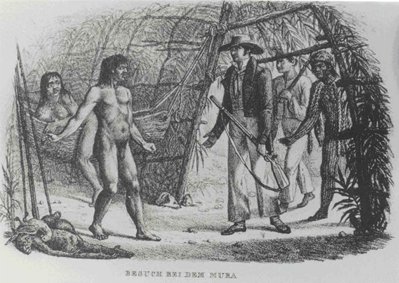
A recent research on the memory of cabanagem as remembered by the Mura in Autazes reveals other versions. In the memory of the elders of the Autazes villages, it was a war against the Mura. In their narratives, the cabanos were not themselves or their eventual allies, but the portuguese, the military, and soldiers connected to the legalist forces, as well as the indigenous populations of Tapajós river (Munduruku) and Negro river, who joined forces with them (Castro Pereira, 2009).
Military repression of the cabanos marks one of the most dramatic pages in Amazonian history. Alongside banishment and enslavement processes, an estimated 40,000 people died (or approximately a third of the uncertain Amazonian population at the time). Defeated in another war and once again a target of "pacification" programs, the Mura were described by travelers in the 19th century, such as Spix & Martius (1976 [1823]) and Coutinho (1861), in the condition of natives who were corrupted by contact, "cultured", vicious, who would work fishing and hunting aquatic animals in exchange for cachaça. They were held, finally, as a decadent and highly primitive population. It is worth noticing, however, that although defeated in combat and highly stigmatized in the eyes of the colonizers, the Mura remained the leading and most numerous population in the Madeira river hydrographic system.
The Mura and the Indian Protection Service – SPI
The Indian Protection Service (SPI) was present in the Mura lands in the municipality of Borba since the first decades of the 20th century, when the process for demarcation of their lands began. In 1917, Amazonas State Government authorized concession of plots of land to the indigenous population, which led the SPI to delimit plots for the Mura in the municipalities of Manicoré, Careiro, Itacoatiara and Borba.
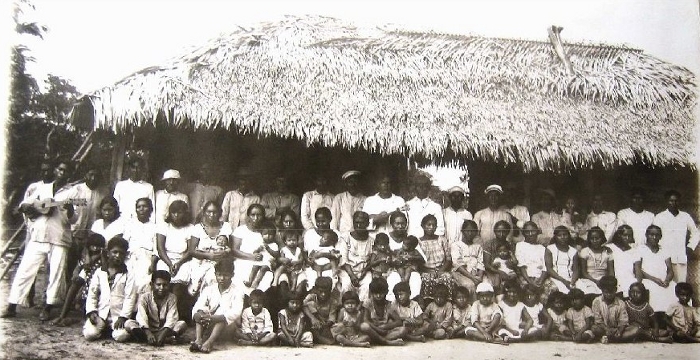
The concession of these small plots of lands and the concentration of Mura population in villages, as happens in the present, was a historical fact constituted in this context and probably dates to the first two decades of the 20th century. The goal behind this measure was to, at the same time, rationalize use of a vast territory and of indian labor, concentrating indians in properly delimited plots and freeing up the remaining area for the non-indian population. This way, two different statutes for land use were created within traditionally Mura territory: indian land, which was a federal area, "belonging to the nation", with its inhabitants being guarded by the SPI; and "civilized" land, of municipal jurisdiction.
Historical sources point to several conflicts of interest between SPI agents and the Mura people. Nimuendaju, who went to Borba in 1926, refers to the death of an SPI employee in Sapucaioroca and Vista Alegre, accused by the Mura of delimiting indian land to private interests.
In Jutaí do Igapó-Açú, the SPI Inspectorate kept a deputy, Mr. Odorico Ferreira Chaves, who appears in the documentation as a non-indian leadership installed in the village with the goal of exploiting indian labor and organizing commercialization of Amazonian nuts. The SPI employee, as happened in other regions of the Amazon, would act as the "boss" in the rubber tree plantations, role often enforced by the local police.
The Mura and the National Indian Foundation (FUNAI)
The land lease policy in the SPI period partly explains the phenomenon of Mura migration towards the urban centers in the region. A more systematic study of indigenous migrational currents towards the Mura neighborhoods in Borba and Autazes could clarify this episode of Mura recent history, as well as elucidate the means of action of indigenous policies that pushed them to abandon villages and concentrate in urban neighborhoods inhabited exclusively by Mura.
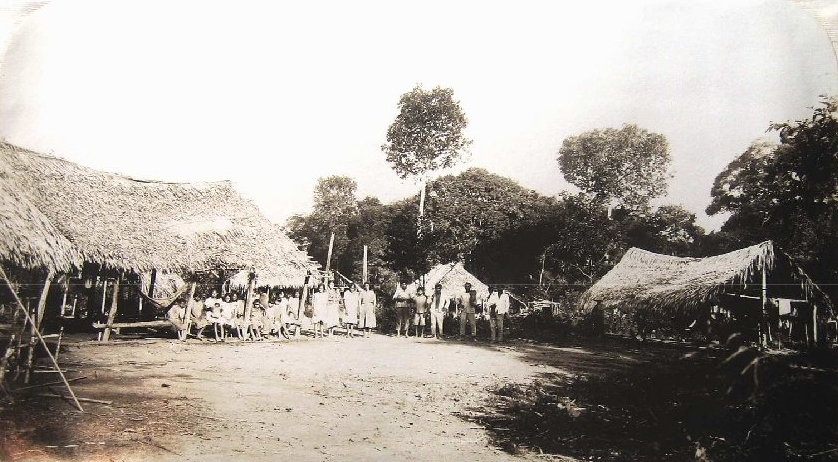
The Mura recovery – and official recognition – of their traditional territories is a recent phenomenon. This process of village reoccupation and reorganization began in the early 1970s and was supported in the following decade by the mobilization of indigenous organizations in the Amazon regarding the issue of land. The Mura were participants since the first formation years of COIAB (Coordination of the Indigenous Organizations of the Brazilian Amazon), via leaderships which founded CIM (Mura Indigenous Council).
In 1987, Funai turned its attention to the Mura, more specifically to the Cunhã-Sapucaia and Jutaí territories, targeted by Petrobras for research and eventual mining of oil and rare gases in the Indigenous Lands of Rio Preto do Igapó-Açú. The research work consisted in the opening of trails and two seismic lines in a territory which, Brasília had assumed, was not occupied by the group. As this work began, authorities and researchers attested that Petrobras's area of interest pervaded Mura occupation territory. In their reports, they registered, with a bit of surprise, that the Mura came from within the forest and demanded the territory for themselves.
Forgotten or dispossessed by the tutelary power since early in the 20st century, the Mura saw themselves faced with a global event of unprecedented dimensions, which promised radical changes to the core of their society. Compensation money was offered to the indians; besides that, it offered to the Mura the opportunity of engaging in the labor force, and presented them gifts, food and supplies, utensils, as well as the possibility of working with movie-like technological apparatus.
Funai established reparations to be owed to the indians. Part of this money was paid to leader Sapucaia, elected representative of the Mura people. The remaining sum was deposited in a Savings Account and was confiscated by the government during the Collor administration economic reforms.
If frustrating from the monetary aspect, the event provoked by the oil research had noteworthy effects. It once again mobilized the Mura in defense of their territories and launched leaders who took part in negotiations in a different political sphere, which articulated local life dynamics directly with Brasília.
Social and political organization
Extensive presence of Mura population in the Madeira river hydrographic system confirms a habitation pattern which gives preference to living close to river banks, guaranteeing subsistence and mobility of group segments. Testimonies from residents about habitation patterns in the beginning of the century tell of scattered occupation of family nuclei through the vast lakes and channels area. The concentration of Mura population in villages, verified today, was a historical fact constituted by intervention of the Indian Protection Service (SPI) and probably dates to the first two decades of the 20th century.
Mura population's choice for living next to lakes is a traditional cultural trait, also conditioned by historical factors. Originally, these master fishermen and Madeira river-farers found ample provision in lakes and channels, which supplied fish and turtles. Historical reasons (listed in History of Contact), which involve slavery and extermination, pushed the Mura into seeking refuge and protection in the lakes and channels further away from the major river communication pathways, where colonial presence was increasingly ostensive and oppressive to natives in the region.
Contemporary Mura villages characteristically comprise a set of habitations not surpassing 30 residential units, spread throughout the highlands alongside lakes or main channels. The lifespan of a Mura village is relatively short: new population nuclei in the territory replace old villages, which are abandoned until there's new occupation. Throughout a lifecycle, a Mura individual will build over 10 houses in the same occupation territory.
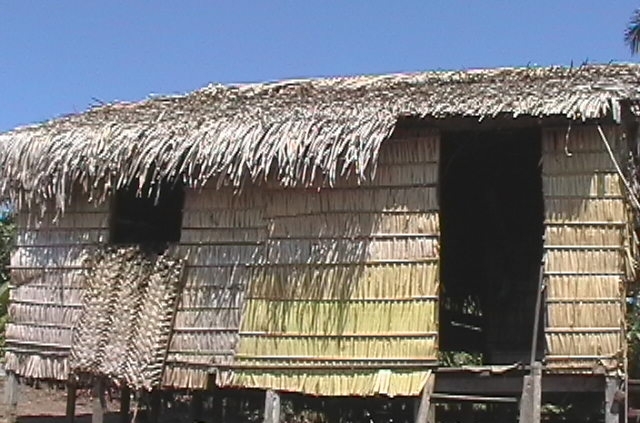
The typical housing used by the Mura differs little from the standard Amazonian riverine constructions: clay or wooden floors, straw or wooden walls and a straw roof. The kitchen is dislocated from the dormitory, and holds a wood stove, which is always on, water pots and a few utensils. These housings usually form segments drawing familiar units around a nucleus formed by the eldest women in the village.
The degree of proximity and exchange between residents and between Mura villages is determined by affinity in kinship and political life. Political arrangements usually involve agreements for the use of natural resources in the areas kept under the influence of the leaders of main villages. This way, Mura mobility must not be confused with the ungoverned use of a generic and undetermined territoriality.
The Mura, opposite of isolating themselves, are involved with ample networks of multilocal relationships which extrapolate the limits of the village and the Indigenous Land. This network comprises not only residents of the Mura communities, but also family members who live in local municipalities, such as Borba, Autazes and even Manaus.
Productive activities
Mura economy, although subsistence-oriented, is marked, in different degrees, by more ample labor and commerce activities: sale of flour, participation in ecotourism and fishing enterprises, as well as wood and straw extraction for sale in the cities. These activities provide varied occupation for the village population. Different communities set up different economic profiles, ranging from activities either focused in wood extraction and commerce, or in local fruits agriculture and commerce. In general, Mura villages provide crew for ships or fishermen for commercial fishing boats and ecological tourism.
In its recent history of contact with national society, the Mura played the part of the semi-enslaved workers, who sell their labor and land in exchange for health assistance and manufactured goods, in a series of economic cycles which took place all over the Amazon. The type of labor relation historically imposed upon the Mura, far from the eyes of federal government assistance or guard and at mercy of unscrupulous exploration from bosses and river merchants, will, in the end of the 20th century, be reproduced internally in the relationships between Mura communities and leaderships.
In the division of labor, men hunt, fish and open land for new farms and expansion of plantations. Children and women supply fish for daily meals, which can be replaced with meat eventually caught by hunters. The boys are soon introduced to hunting in TI Cunha-Sapucaia, accompanying their fathers in the hunting trails belonging to each family.
In the logging-oriented communities, the men go into the forest in search for wood, but are assisted by youths and by the children, who generally help in other tasks. Women are in charge of farming. All of the community participates in harvesting the Brazilian nut. For commercialization of surplus crops, they follow family unit divisions.
The Mura combine activities of different natures to guarantee their sustenance. The basic food is fish, easily found in channels and rivers in the area, served baked or cooked with manioc flour produced by each family unit in communitary flour houses (usually owned by an extended family). They also consume coffee, sugar, rice, pasta, salt and crackers, acquired in town. They also buy medicine, clothes, fuel and tools.
Mura farms are generally replanted in a different location every two harvest cycles. Manioc products are broadly consumed throughout the year. Villages have at least one piece of equipment for producing flour, although the desired would be every extended family to have their own flour house. In their farms, they plant several types of manioc, as well as other roots and tubers which balance and complete the necessary nutrients for their diets.
The Mura are skilled fishermen and hunters. They appreciate fish – jaraqui (Silver Prochilodus), tigerfish, tucunaré, matrinxã (Brycon cephalus) – and game meat from animals such as: tapirs, deer, musk hogs/collared peccaries, robust capuchin monkeys, howler monkeys, tortoise, white-lipped peccaries, agoutis, Cracidae family birds and speckled chachalacas. These activities are still carried out traditionally, but make use of technologies incorporated from locals. Fishing is done with arrows, spears and hooks. Dogs are used for hunting. Only a few residents own shotguns.
Gathering of different types of nuts stand out as one of the main activities in all communities. They are very appreciated and complement their diets, alongside the several fruits found in the region, such as açaí, Parahancornia amapa, babassu, bacaba, Moriche palm fruit, souari nut, tucum, Endopleura uchi; as well as plants grown at home near the housings, such as avocado, pineapple, acerola, banana, cocoa, coffee, cashew, cane, starfruit/carambola, coconut, cupuaçú, guava, jackfruit, rosa apple, genipapo, courbaril, orange, lemon, lime, papaya, mango, passion fruit, peach palm and watermelon.
Extractive activity is a traditional Mura practice, which predates agriculture and surpasses it in importance. It was with the gathering and sale of the Brazilian nut that the Mura developed the tools to deal with the consumer market. The experience acquired is used in the sale of wood, the most required product in the local market. With the decline of the Brazilian nut period, logging and livestock breeding started growing in the area.
Claiming low productivity in the nut tree crops in the area, the Mura are gradually complementing their supply of Brazilian nut to the local market with other products, among which timber is the most easily accepted and yields the best price. Extraction involves several agents who participate in the social circle and are important elements to understand the dynamics in these societies. These mechanisms consisted, before the homologation of Mura Indigenous Lands, of alliances with one or more river merchant boats, with which they sealed exclusive trade pacts.
Sources of information
- AMOROSO, Marta Rosa. 1991. Guerra Mura no Século XVIII: Versos e Versões. Representações dos Mura no Imaginário Colonial. Campinas: UNICAMP. (Dissertação de Mestrado)
- --------. 1992. “Corsários no caminho fluvial: os Mura do rio Madeira”. In: CARNEIRO DA CUNHA, M (Org.). 1992. História dos Índios no Brasil. São Paulo: FAPESP/SMC/Cia. das Letras.
- --------. 1995. “Muhuraida: o Terceiro Épico do Arcadismo”. In: Jornal de Resenhas, Folha de São Paulo (6/11).
- --------. 1998. “Território do Medo: Notas sobre a Utilização da Crônica Setecentista como Fonte da Etnografia Mura”. In: NIENMEYER, A. & PIETRAFESA DE GODOI, Emília (Orgs.). 1998. Para além dos territórios. Para um diálogo entre etnologia indígena, os estudos rurais e os estudos urbanos. Campinas: Mercado de Letras/PPGAS-UNICAMP. --------. 2001. (Coord.). Relatório Circunstanciado de Identificação e Delimitação da Terra Indígena Cunhã-Sapucaia. Brasília: CGID-FUNAI.
- ANÔNIMO. [s/d.]. "Ilustração Necessária e Interessante, Relativa ao Gentio da Nação Mura, Habitador dos Rios Madeira, Trombeta, Guatazes, Cadajazes, Purus, Mamia, Coari, Paruá e Copaca, aa Capitania do Rio Negro". In: MOREIRA NETO, Carlos A. 1988. Índios da Amazônia: Da Maioria a Minoria (1750-1850). Petrópolis: Vozes 1988. 12 p.
- ANÔNIMO. 1984. "Notícia da Voluntária Redução de Paz da Feroz Nação do Gentio Mura. 1784, 1785 e 1786". In: Boletim CEDEAM, v.3, nº 5. Manaus: UFAM.
- ARAÚJO AMAZONAS, Lourenço da Silva. 1852 Diccionário Topográfico, Histórico e Descriptivo da Comarca do Alto Amazonas. Recife: Typografia Comercial Meira Rodrigues.
- BATES, Henry Walter. 1979. Um Naturalista no rio Amazonas. Belo Horizonte/São Paulo: Itatiaia/EDUSP.
- DIAS, Leonardo Guimarães Vaz. 2004. Gentios de Corso: Os Mura no processo de conquista e colonização do Norte da América Portuguesa. Niterói: UFF. (Dissertação de Mestrado)
- EVERETT, Daniel. 1978. Aspectos da Fonologia Pirahã. Campinas: IEL-UNICAMP. (Dissertação de Mestrado)
- --------. 1983. A língua Pirahã e a Teoria da Sintaxe. Campinas: IEL-UNICAMP.
- FERRARINI, Sebastião. 1981. Borba, Primeira Vila do Amazonas. Manaus: Ed. M3.
- GONÇALVES, Marco Antonio Teixeira. 1988. Nomes e Cosmos: Uma Descrição da Sociedade e da Cosmologia Mura-Pirahã. Rio de Janeiro: PPGAS-MN/UFRJ. (Dissertação de Mestrado)
- --------. 1993. O Significado do Nome: Cosmologia e Nominação entre os Pirahã. Rio de Janeiro: Sette Letras.
- --------. 1996. “O Valor da Afinidade: Parentesco e Casamento entre os Pirahã”. In: Revista de Antropologia, vol. 40, nº 1. São Paulo: FFLCH-USP.
- --------. 2001. O Mundo Inacabado: ação e criação em uma cosmologia amazônica. Etnogradia Pirahã. Rio de Janeiro: Editora UFRJ. 424 p.
- KROEMER, Gunter. 1985. Cuxiuara, o Purus dos indígenas: ensaio etno-historico e etnografico sobre os indios do medio Purus. São Paulo: Loyola.
- MAHALEM DE LIMA, Leandro. 2008. Rios Vermelhos: perspectivas e posições de sujeito em torno da noção de cabano na Amazônia em meados de 1835. São Paulo: FFLCH-USP. (Dissertação de Mestrado)
- MARCOY, Paul. s/d. [1849]. Viagem pelo rio Amazonas. Manaus: EDUA/Edições Governo do Estado.
- MEIRA, Márcio; BARROS, M. Cândida; BORGES, Luiz. 1996. “A Língua Geral como Identidade Construída”, Revista de Antropologia, v. 39, nº 1. São Paulo: FFLCH-USP. Pp. 191-219.
- MÉNENDEZ, Miguel. 1981. Uma contribuição para a etnohistória da área Tapajós-Madeira. São Paulo, FFLCH-USP. (Dissertação de Mestrado)
- --------. 1992. “A área Tapajós-Madeira”. In: CARNEIRO DA CUNHA, Manuela (Org.). História dos Índios no Brasil. São Paulo: Cia. das Letras.
- MOREIRA NETO, Carlos de Araújo. 1988. Índios da Amazônia: da Maioria a Minoria (1750-1850). Petrópolis: Vozes.
- MOREIRA SANTOS, Ana Flávia. 2009. Conflitos Fundiários, Territorialização e Disputas Classificatórias. Autazes (AM), Primeiras Décadas do Século XX. Rio de Janeiro: MN-UFRJ. 415 p.
- NIMUENDAJÚ, Curt Unkel. 1925. "As Tribos do Alto Madeira". In: Journal de la Sociéte des Americanistes. Vol. 17. Paris. Pp: 137-172.
- --------. 1946. "The Mura and Pirahã". In: STEWARD, Julien Haynes (Ed.). 1948. Handbook Of South American Indians. 2 t. Washington. Pp : 55-268.
- OLIVEIRA, Adélia Engrácia; RODRIGUES, Ivelise. 1977. "Alguns Aspectos Da Ergologia Mura-Pirahá". In: Boletim do Museu Paraense Emílio Goeldi, nº. 65. Belém: MPEG.
- --------. s/d. “Notas sobre a situação dos índios Mura”. Belém: MPEG. 5 p.
- OLIVEIRA, AE (Ed.). 1986. Autos da Devassa Contra os Índios Mura do Rio Madeira e Nações do Rio Tocantins (1738-39). Série Fac-Símiles e Transcrições Paleográficas. Manaus: CEDEAM-UFAM.
- PEQUENO, Eliane S. S. 2006. “Mura, guardiães do caminho fluvial”. Revista de Estudos e Pesquisas, FUNAI, Brasília, v. 3, n.1/2, jul./dez. Pp. 133-155.
- POHL, Luciene; DURIGAN, Carlos César (Orgs.). 2002. Trincheira: a luta do povo Mura. Manaus: Coiab. 28 p.
- RODRIGUES DE MELO, Joaquim. 2007. A Política Indigenista no Amazonas e o Serviço de Proteção aos Índios: 1910-1932. Manaus: ICHL-UFAM. 233p. 2 v. (Dissertação de Mestrado + Anexo Documental)
- RODRIGUES FERREIRA, Alexandre. [1787]. “Memória sobre o Gentio Mura, de 30 de Agosto de 1787, lida na Academia Real das Ciências de Lisboa em 1830”. In: 1974. Viagem Filosófica pelas Capitanias do Grão-Pará, Rio Negro, Mato-Grosso e Cuiabá. Rio de Janeiro: Conselho Federal de Cultura.
- ROLIM DE MOURA, Antonio. 1994. Borba. Diagnóstico Sócio-Econômico e Cadastro Empresarial. Série Estudos Municipais. Manaus: Ed. SEBRAE.
- SPIX & MARTIUS. 1981. Viagem pelo Brasil (1817-1820). Belo Horizonte, São Paulo: Itatiaia, EDUSP. V. 3.
- SWEET, David. 1992 “Native Resistence in the Eighteenth century Amazonia: the ‘abominable Muras’ in war and peace”. In: Radical History Review, nº 53. Durham: Duke University Press. Pp: 49-80.
- TASTEVIN, Constantin, Pdre. 1923. “Indiens Mura de la Région de L’Autaz”. In: L’ Antropologie, 33: 509-33.
- WILKENS, Henrique João. 1993 [1785]. Muhuraida ou o Triunfo Da Fé. Rio de Janeiro, Manaus: Biblioteca Nacional, UFAM.